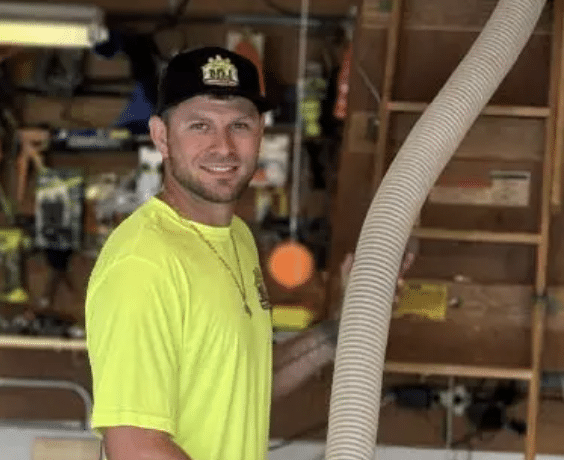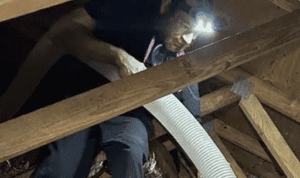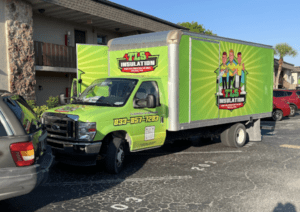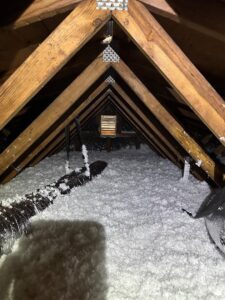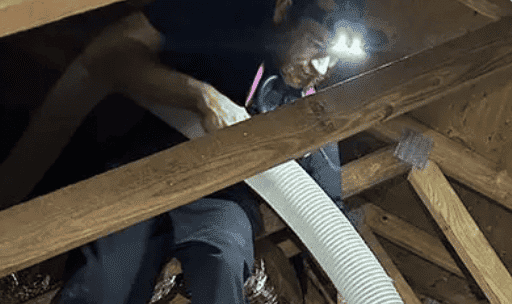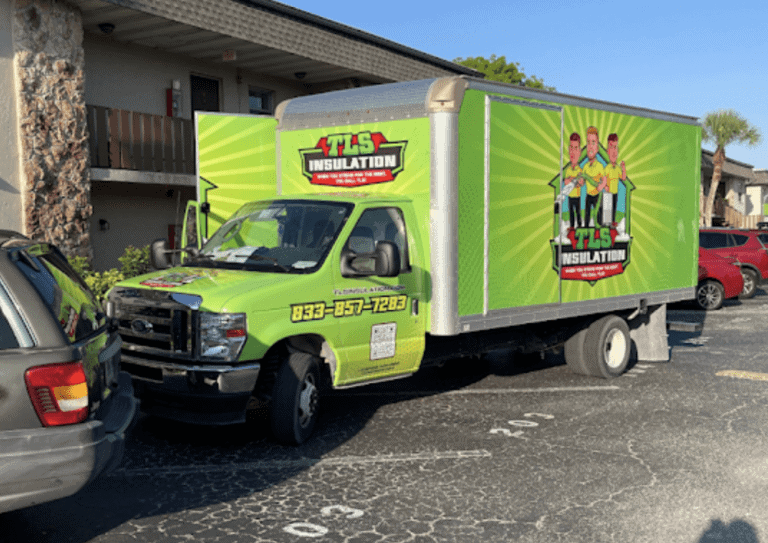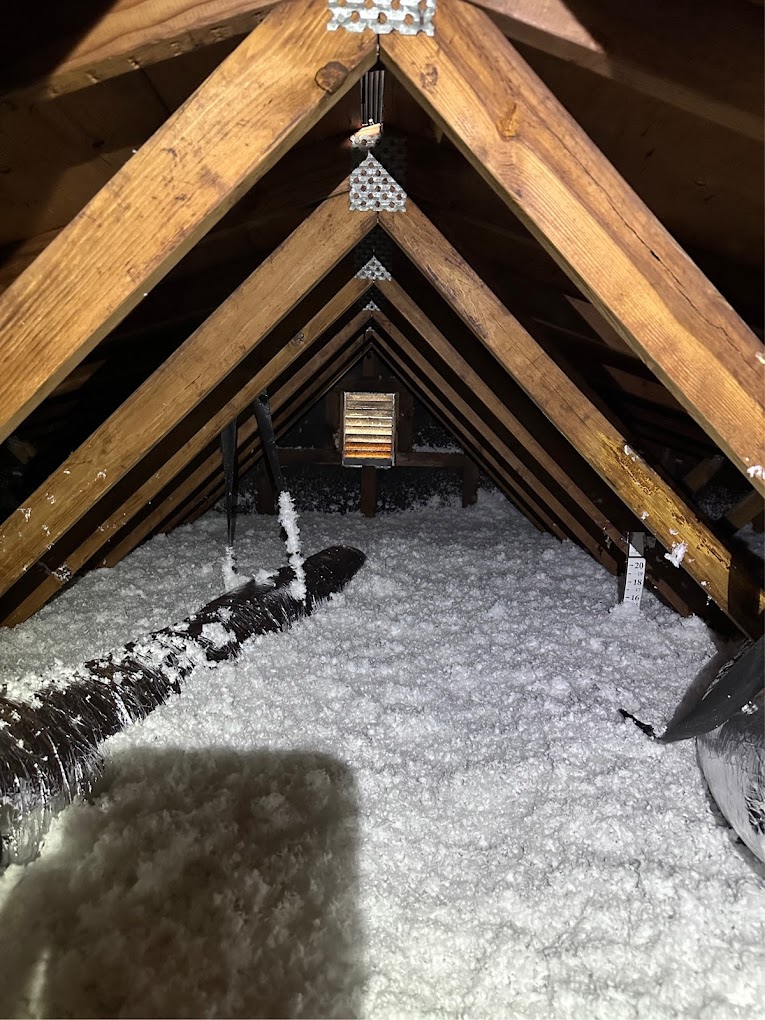Insulation is a critical component in any building, ensuring energy efficiency, comfort, and even safety. In Florida, it’s the difference between a tolerable or intolerable summer.
Over time, however, insulation can degrade, lose its effectiveness, or become contaminated, making removal necessary.
As the best rated insulation company in Tampa and Sarasota, we’ve removed old insulation from thousands of homes and replaced it with modern insulation.
Here, we explore the reasons why removing old insulation is crucial for maintaining a healthy, efficient, and comfortable living environment.
Degradation of Material
Insulation materials, no matter how well-installed, degrade over time.
Factors such as temperature fluctuations, humidity, and physical disturbances can all contribute to the deterioration of insulation.
For instance, fiberglass insulation can become compacted, cellulose can settle over time, and foam insulation can crack or shrink, creating gaps in the barrier.
These changes reduce the material’s ability to prevent heat exchange, compromising the energy efficiency of the home.
In other words, have you ever seen your electricity bill rise even though the temperature of your house hasn’t changed much?
Old insulation not doing its job might be why.
Moisture and Mold Issues
One of the most pressing reasons to remove old insulation is moisture accumulation. This is compounded by humid Florida summers and lack of proper care when your home was first insulated.
Insulation that has been exposed to water through leaks, flooding, or high humidity can retain moisture.
This not only reduces its insulative properties but also leads to the growth of mold and mildew.
Mold feeds on organic materials. While insulation materials like fiberglass themselves do not provide nutrients for mold, they can trap dust, dirt, and other debris which contain organic matter.
Cellulose insulation, made from recycled paper, is particularly susceptible because it is inherently organic.
Mold in insulation can be a health hazard, causing respiratory issues and other health problems for the inhabitants. Removing water-damaged or moldy insulation is essential to prevent these health risks and structural damage to the building.
Pest Infestations
Old insulation can often become a breeding ground for pests such as rodents, insects, and birds.
In some of our service areas like in St. Pete, we often deal with roof rats, who prefer to nest in higher parts of buildings, such as attics.
They are known for their agility and can climb into homes from overhanging trees, leading to nests in or near insulation.
We often also deal with Starlings, which is a type of bird who enter homes through small openings and are known for building nests in attic spaces.
Like pigeons, their nesting habits can displace insulation and their droppings can lead to health risks.
These pests not only cause physical damage to the insulation by nesting and moving through it, but they can also pose health risks through their droppings and the introduction of parasites.
Removing infested insulation is crucial in eliminating these health hazards and stopping further infestation.
Upgrading to More Efficient Materials
Every year we learn more about how to best insulate homes, especially in tropical areas like West Florida.
If there are differences in practices between 2 years, imagine the differences between 40 years?
This isn’t to say that your previous insulation team didn’t do a good job – but often the old practices they used are no longer important for home insulation.

Advancements in insulation technology mean that newer materials are often more efficient and environmentally friendly than those available in the past.
Removing old insulation provides an opportunity to upgrade to materials that offer better thermal resistance and are more effective at reducing energy costs.
For example, replacing traditional fiberglass batts with spray foam can significantly enhance a home’s energy efficiency and air sealing.
Compliance with Current Building Codes
Building codes evolve, and what was once considered adequate insulation may now fall short of current standards.

For example, In 2002 Florida adopted a unified statewide building code, the Florida Building Code (FBC), which replaced the various local building codes previously in place throughout the state.
This new code was partly a response to the destructive hurricanes in the 1990s and aimed to standardize building practices to enhance durability and safety across the state.
Significantly, the FBC includes specific sections on energy conservation that have evolved over time. These sections set minimum R-values (a measure of insulation’s thermal resistance) for various parts of a building’s envelope, including walls, floors, and roofs.
The energy efficiency requirements have become more stringent with each update of the FBC. The changes in R-value requirements over the years have necessitated the removal and replacement of older, less efficient insulation to meet current standards, particularly during major renovations or when converting attic spaces into livable areas.
Further updates to the FBC, particularly after the 2010 amendments, have emphasized not just the thermal resistance of insulation materials but also their installation techniques and interaction with other building components to improve overall energy efficiency and moisture resistance.
Removing old insulation can be necessary to bring a building up to code, especially during renovations or expansions.
Compliance with these codes not only ensures safety and efficiency but can also affect the resale value of a property.
Improving Indoor Air Quality and Comfort
Old, degraded insulation can contribute to poor indoor air quality by trapping dust, allergens, and pollutants. It can also affect the overall comfort of the home by failing to adequately regulate temperatures, leading to cold drafts in the winter and overheated spaces in the summer.
Removing old insulation and replacing it with new, high-quality material can significantly improve the comfort levels of a home and ensure cleaner indoor air.

Insulation that has become old and degraded not only loses its effectiveness in maintaining a stable indoor temperature but can also become a repository for a variety of airborne contaminants.
Over time, insulation can accumulate dust, pet dander, pollen, and other allergens, which can then circulate through a home’s HVAC system. Especially for individuals with allergies or respiratory conditions, this can significantly deteriorate the indoor air quality.
As insulation materials break down, they may release particulate matter into the air, which can further exacerbate health issues. This is why replacing old insulation is often recommended as part of broader efforts to improve air quality in a home, alongside other measures such as using air purifiers and ensuring regular maintenance of heating and cooling systems.
The physical comfort of your home is directly impacted by the state of its insulation.
Inefficient insulation can lead to noticeable temperature discrepancies between different areas of a home, making some rooms uncomfortably hot or cold depending on the season.
This inconsistency not only affects comfort but can also lead to increased energy consumption as heating and cooling systems work harder to compensate for heat gains and losses.
By upgrading to newer, more efficient insulation materials, homeowners can achieve more uniform temperature control, reduce the strain on HVAC systems, and lower energy costs.
This improved regulation of indoor temperatures not only enhances comfort but also contributes to a more sustainable living environment by reducing the overall energy footprint of the home.
How Do You Know If Your Insulation Should Be Replaced?
If you live in West Florida, give us a call at 833-857-7283 and our team would be happy to give you a free estimate.
The good news is that old insulation isn’t too difficult to remove, as long as you comply with health and safety codes when doing it.

